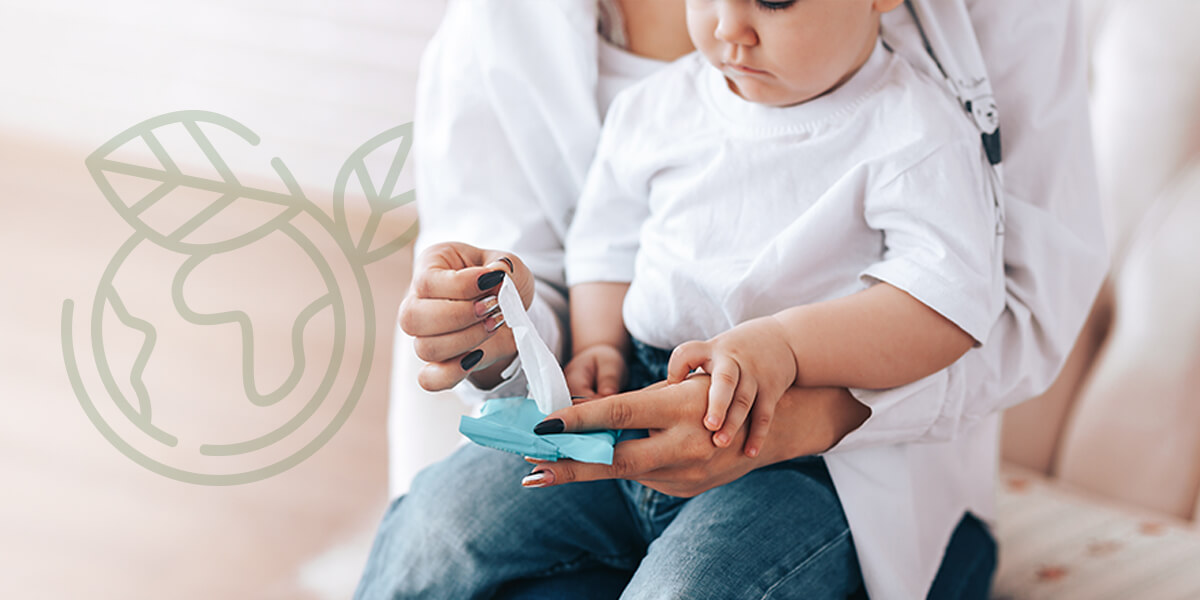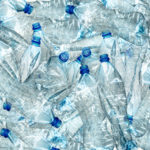Learning Center: Sustainable Wipes Packaging 101
- Published: August 03, 2023

Regulations and public concerns are two powerful trends driving sustainable packaging. Consumers are increasingly aware that most plastic packaging eventually ends up in a landfill, and recent data shows that consumers prefer sustainable packaging even if it comes at a higher price:
- An Ipsos survey noted that 92% of respondents said recycling was now more or equally as important than before the pandemic for handling the increase in plastics and packaging.1
- 60% to 70% of consumers say they would pay more for sustainable packaging.2
- Consumers indicate they would be willing to pay on average 26% more – and up to 44% more – for sustainable products.3
Most wipes packaging today is not sustainable packaging. But we can help you change that.
Which sustainable solution is right for your wipes packaging?

- Recyclable packaging
- Compostable packaging
- Packaging made from renewable resources
- Packaging made from post-consumer recycled (PCR) materials
Recyclable wipes packaging
In order for wipes flexible packaging to be recyclable, it needs to have single-source material construction. Essentially, all layers of the package have to be made from the same material.
An example of this is recyclable wipes packages made from multiple layers of polyethylene (PE).
Recyclable wipes packages can be recycled at over 18,000 store drop-off locations in the U.S., and over 60% of consumers have access to collection systems that accept recyclable wipes packaging.
As a member of the Sustainable Packaging Coalition (SPC), we use their How2Recycle system for certifying various recyclable packages. If you’d like to display a How2Recycle logo on your product, which provides a visual informing consumers exactly how to recycle your package, we can assist in this process.
Compostable wipes packaging

Compostable packaging breaks down into non-toxic components that can be cycled back into the soil without polluting the environment. There are several types of bioplastics used for compostable packaging:
PLA: Poly (lactic acid)
- Only compostable in industrial compost facilities; not suitable for at-home composting
- Derived from starch
PHA: Polyhydroxyalkanoates
- Broad family of bioplastics naturally produced by microorganisms
- Produced and stored by microorganisms as an energy source
(similar to fat in humans) - At-home compostable and marine biodegradable
PBAT: Polybutylene adipate terephthalate
- Derived from fossil fuels rather than biobased
- Typically compounded with other materials such as PLA or starch to improve functional properties
PBS: Polybutylene succinate
- A biodegradable aliphatic polyester with properties that are comparable to polypropylene
We work with the Biodegradable Products Institute (BPI) to have our compostable packaging solutions tested and certified. BPI-certified compostable packaging meets specifications for ASTM D6400 or ASTM 6868, which are globally recognized biodegradation test standards.
BPI ensures that certified products mixed with food scraps and yard trimmings will break down during the regular composting process within 90 to 180 days of disposal.
Our wide variety of compostable materials and structures provide a range of properties for barrier, performance, clarity, and appearance (such as natural, metallized, clear, foggy, white, etc.) depending on shelf life and packaging equipment requirements.

Wipes packaging made from post-consumer recycled (PCR) materials
PCR packaging is manufactured using packaging films made from previously recycled materials. To create these packaging films, plastic waste collected from recycling centers is sorted, sterilized, and repurposed into new packaging options including PCR.
Key benefits of PCR packaging:
- Matches the quality of non-recycled flexible packaging, offering the same level of protection, barrier performance, and strength as nonrecycled plastic films
- Allows brands to fulfill sustainability goals without relying on the consumer to recycle or compost package after use.
Wipes packaging made from renewable resources
Falling into this category is any packaging made from resources that can be replenished naturally over the course of time. Examples of these materials are:
- Polylactic Acid (PLA)
- Bioplastic derived from fermented plant starch (corn, cassava, sugarcane or sugar beet pulp)
- Plant-based PE resins
- Made using sugarcane or potato starches
- Paper structures
Offering the most cost-effective and efficient solutions for sustainable wipes packaging
Wipe manufacturers can now choose sustainable packing options without risking disruption to their bottom line or their supply chain. C-P Flexible Packaging combines sustainable packaging options with peel and reseal innovation.
- Our high-barrier packaging films meet the sustainability needs of your business while protecting product integrity and extending shelf life
- You’ll have less scrap waste, with no reduction in production speed
- Our unique winding process and over six decades of experience allows our peel and reseal wipes packaging material to run and unwind just like regular flexible packaging rollstock, without the usual machine adjustments or waste
Get to Know C-P Flexible Packaging
C-P Flexible Packaging is a fully integrated, full-service flexible packaging converter. With all capabilities in-house, we have full control over our quality—which yields consistently reliable packaging, with less waste on your filling lines. We even have our own in-house recycling facility.
Reach out to learn how we can help you make the switch to sustainable packaging hassle-free. We can help you go from concept to sustainable prototype in just days, not weeks.
Sources: 1. Flexible Packaging Association, “A Flexible Packaging Path to a Circular Economy” Report – https://www.flexpack.org/publication/RG93bmxvYWQ6NDU4 2. https://www.mckinsey.com/industries/paper-forest-products-and-packaging/our-insights/sustainability-in-packaging-inside-the-minds-of-us-consumers 3. https://recyclingpartnership.org/americas-prefer-sustainable-companies/



